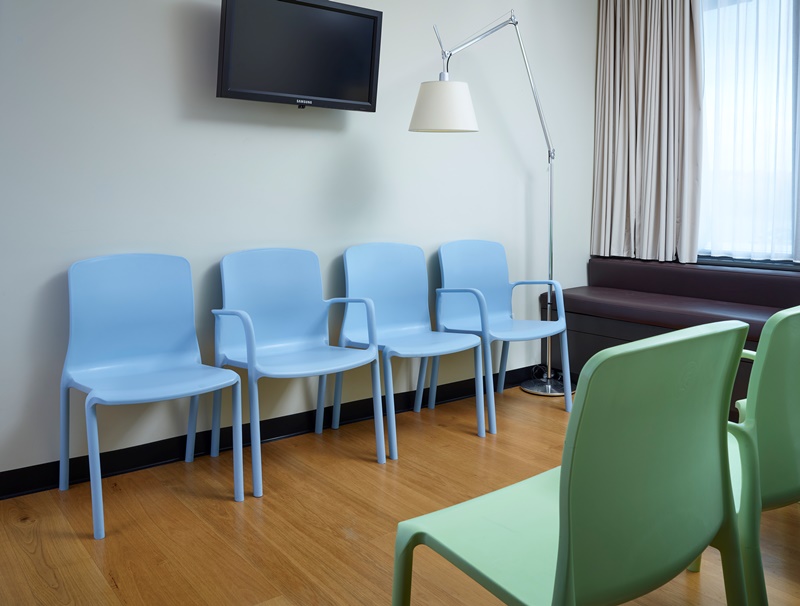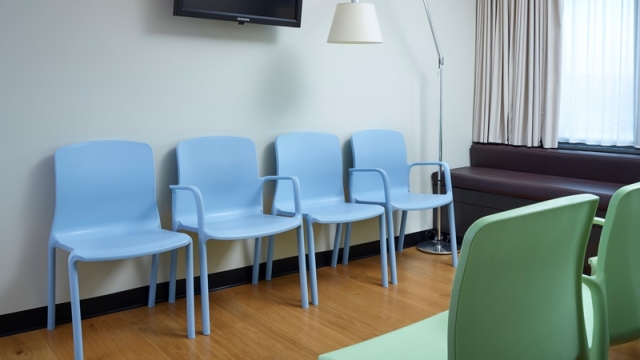The Future of Healthcare Design: Revolutionizing Furniture for Patients and Providers
In the ever-evolving world of healthcare, one aspect that often goes unnoticed is the impact of furniture design on the overall patient and provider experience. While healthcare furniture might not be the first thing that comes to mind when thinking about advancements in the field, it plays a crucial role in ensuring comfort, functionality, and accessibility for all those involved.
When it comes to patients, the right furniture can make a world of difference in their healing journey. Imagine a hospital room with ergonomic beds that can be easily adjusted to provide ultimate comfort or recliners that allow patients to relax and recuperate. These innovative designs not only improve patients’ physical well-being but also enhance their mental and emotional state, creating an environment conducive to healing.
Moreover, healthcare furniture also plays a vital role in supporting the needs of healthcare providers. From hospital waiting areas to examination rooms, the furniture needs to accommodate a wide range of activities and interactions. Design elements such as modular seating arrangements, adjustable workstations, and storage solutions can greatly enhance efficiency, helping healthcare professionals to deliver optimal care while maintaining a comfortable and organized working environment.
In this article, we will dive deeper into the future of healthcare furniture design, exploring the latest trends and innovations that are shaping the industry. We will examine how cutting-edge materials, technology integration, and user-centric approaches are revolutionizing the way furniture is designed, constructed, and implemented in healthcare facilities. Join us on this exciting journey as we explore how the right furniture can transform patient experiences and improve the overall delivery of care.
Ergonomic Furniture for Enhanced Patient Comfort
Quality healthcare is not only about medical expertise, but also about creating a comfortable and calming environment for patients. One crucial aspect of this is the design of healthcare furniture. By focusing on ergonomics, healthcare facilities can prioritize patient comfort and well-being.
When patients are in healthcare settings, they often spend a significant amount of time sitting or lying down. Therefore, it is essential to have furniture that provides adequate support and promotes good posture. Ergonomic chairs with adjustable features, such as lumbar support and height adjustment, can enable patients to find their most comfortable position, reducing muscle strain and preventing discomfort.
Furthermore, bedside tables and overbed tables with adjustable height and tilt options not only facilitate eating and medication administration but also provide patients with a sense of independence and control. These features allow patients to customize their immediate environment to their needs, promoting a positive and empowering experience.
In addition to adjustable features, healthcare furniture can incorporate soft, cushioned materials and fabrics that are easy to clean and sanitize. Comfortable seating and bedding are not only essential for relaxing patients but also for preventing pressure ulcers, which can be particularly detrimental to individuals with limited mobility.
By investing in ergonomic furniture, healthcare facilities can demonstrate their commitment to patient comfort and well-being. Comfortable patients tend to be more relaxed, which can contribute to better overall health outcomes. Therefore, the future of healthcare design lies in the revolutionization of furniture that prioritizes patient care and comfort.
Adaptable Designs to Meet the Needs of Healthcare Providers
Healthcare providers require furniture that can adapt to their ever-changing needs. With the fast-paced nature of healthcare environments, furniture must be designed to be versatile, functional, and durable. Adaptable designs are crucial in ensuring that healthcare providers have the necessary tools to deliver optimal care to their patients.
One aspect of healthcare furniture that emphasizes adaptability is ergonomic design. Ergonomics focuses on creating furniture that supports proper body mechanics and reduces the risk of musculoskeletal disorders. Healthcare providers spend long hours attending to patients, often in physically demanding positions. Adaptable furniture designs, such as adjustable chairs and workstations, enable providers to customize their setup to promote better posture and reduce the strain on their bodies.
In addition to ergonomics, adaptable furniture designs also prioritize flexibility. Healthcare environments need furniture that can easily be rearranged to accommodate different workflows and patient needs. Mobile carts, for example, allow providers to have essential supplies within reach wherever they are in the facility. Modularity is also a key feature, as it allows furniture pieces to be easily reconfigured or expanded based on evolving requirements. This adaptability ensures that healthcare providers can create efficient and patient-centered spaces.
Furthermore, the use of technology integration is becoming increasingly important in healthcare furniture design. Modern healthcare facilities rely heavily on technology for patient monitoring, information sharing, and communication. Adaptable furniture designs incorporate features such as built-in power outlets, USB ports, and wireless charging capabilities, enabling healthcare providers to seamlessly incorporate technology into their workstations. These technological advancements not only improve efficiency but also enhance the overall patient experience.
In conclusion, the future of healthcare furniture lies in its adaptability. By prioritizing ergonomic design, flexibility, and technology integration, furniture manufacturers can revolutionize the way healthcare providers work. Adaptable furniture designs not only meet the immediate needs of healthcare providers but also allow for scalability and customization as healthcare practices continue to evolve.
Integrating Technology for Improved Healthcare Furniture
Advancements in technology are revolutionizing various industries, and healthcare furniture is no exception. By integrating technology into healthcare furniture designs, we can enhance the overall experience for both patients and healthcare providers.
Firstly, the integration of technology allows for improved patient comfort and care. Modern healthcare furniture can now be equipped with sensors and smart features that automatically adjust to the specific needs of patients. For example, beds can be designed to monitor vital signs and adjust the positioning for optimal support and comfort. This not only enhances the comfort of patients but also helps healthcare providers monitor their health more effectively.
Secondly, technology integration in healthcare furniture enables streamlined communication and connectivity. With the integration of smart devices and wireless connectivity, patients can easily communicate with healthcare providers and access information at their fingertips. This eliminates the need for traditional call systems and allows for efficient and timely communication. Moreover, healthcare providers can remotely monitor patients and access medical data in real-time, providing immediate assistance when needed.
Lastly, technology integration in healthcare furniture contributes to improved efficiency in healthcare settings. For instance, the integration of electronic medical records directly into hospital furniture enables seamless access to patient information, reducing the need for physical paperwork and enhancing workflow efficiency. Additionally, technology-driven features such as adjustable lighting and temperature control can create a more soothing and comfortable environment for patients, promoting faster recovery and improving overall satisfaction.
In conclusion, the integration of technology into healthcare furniture holds immense potential for transforming the patient experience and streamlining healthcare processes. As technology continues to advance, we can expect further innovations that will truly revolutionize healthcare furniture, ultimately benefiting both patients and healthcare providers alike.

